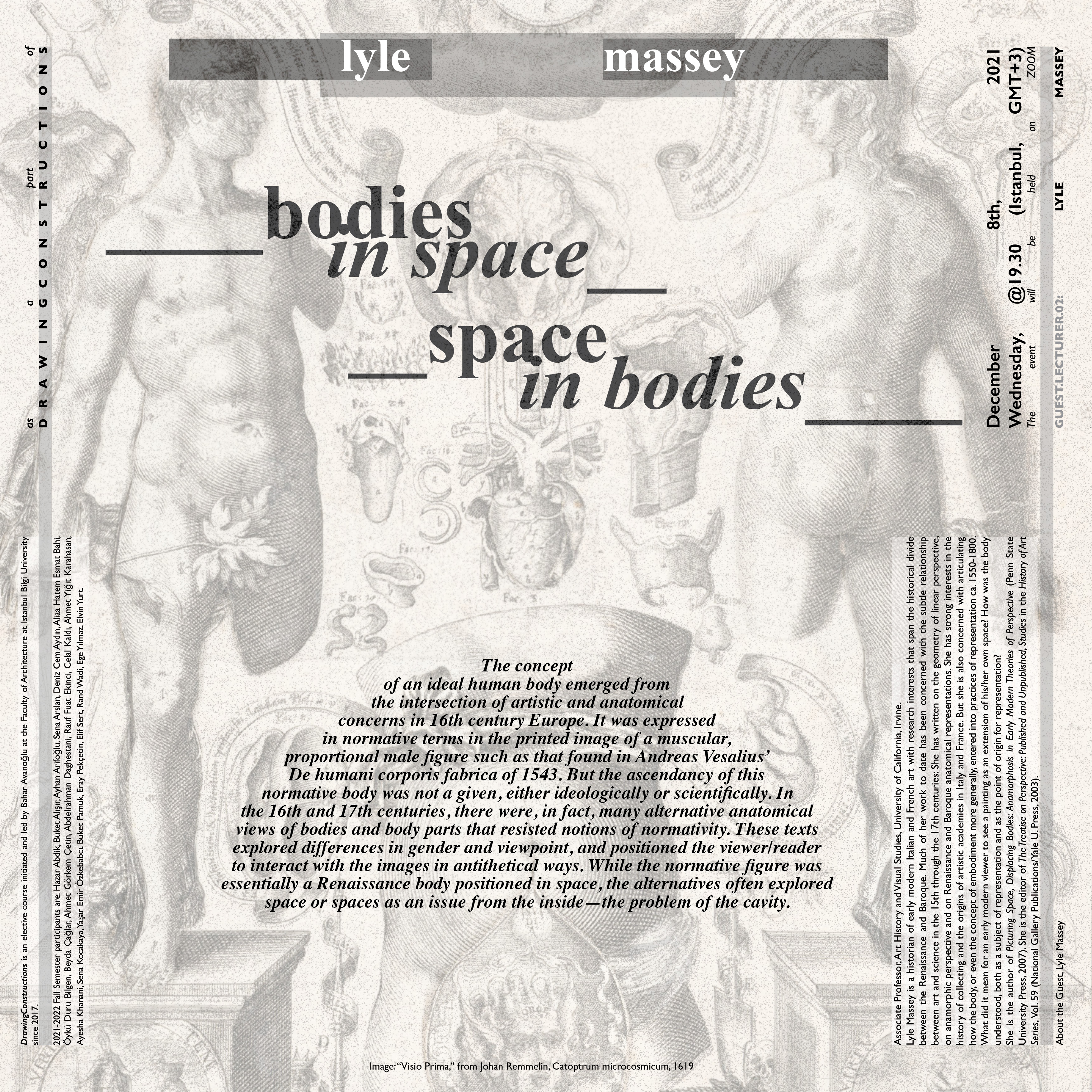> Bodies in Space, Space in Bodies
Guest Lecture by Lyle Massey
as a Part of DrawingConstructions, elective course by Bahar Avanoğlu
@ Istanbul Bilgi University
via Zoom
December 2021

*About the Lecture, ‘Bodies in Space, Space in Bodies’
The concept of an ideal human body emerged from the intersection of artistic and anatomical concerns in 16th century Europe. It was expressed in normative terms in the printed image of a muscular, proportional male figure such as that found in Andreas Vesalius’ De humani corporis fabrica of 1543. But the ascendancy of this normative body was not a given, either ideologically or scientifically. In the 16th and 17th centuries, there were, in fact, many alternative anatomical views of bodies and body parts that resisted notions of normativity. These texts explored differences in gender and viewpoint, and positioned the viewer/reader to interact with the images in antithetical ways. While the normative figure was essentially a Renaissance body positioned in space, the alternatives often explored space or spaces as an issue from the inside—the problem of the cavity.
**About the Guest, Lyle Massey
Lyle Massey (Assoc. Prof., Art History and Visual Studies, University of California, Irvine) is a historian of early modern Italian and French art with research interests that span the historical divide between the Renaissance and Baroque. Much of her work to date has been concerned with the subtle relationship between art and science in the 15th through the 17th centuries: She has written on the geometry of linear perspective, on anamorphic perspective and on Renaissance and Baroque anatomical representations. She has strong interests in the history of collecting and the origins of artistic academies in Italy and France. But she is also concerned with articulating how the body, or even the concept of embodiment more generally, entered into practices of representation ca. 1550-1800. What did it mean for an early modern viewer to see a painting as an extension of his/her own space? How was the body understood, both as a subject of representation and as the point of origin for representation?
She is the author of Picturing Space, Displacing Bodies: Anamorphosis in Early Modern Theories of Perspective (Penn State University Press, 2007). She is the editor of The Treatise on Perspective: Published and Unpublished, Studies in the History of Art Series, Vol. 59 (National Gallery Publications/Yale U. Press, 2003).
